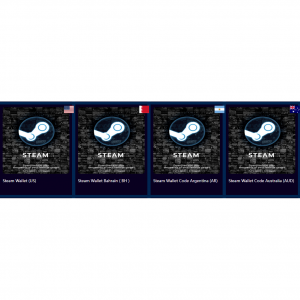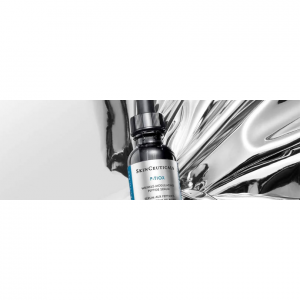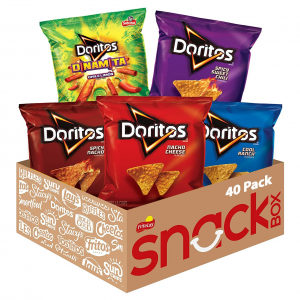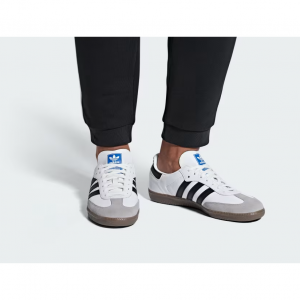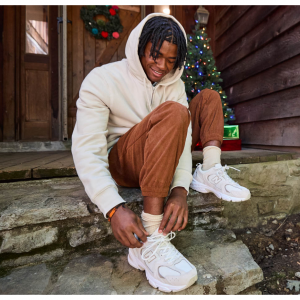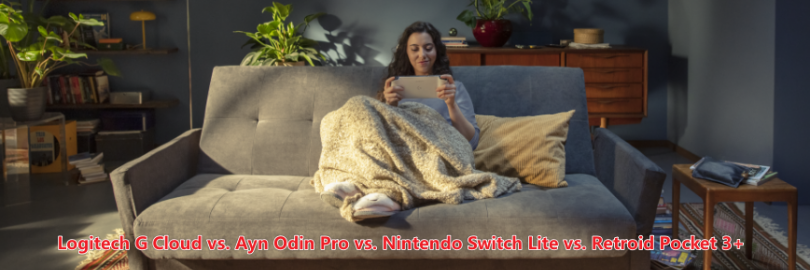
Logitech G Cloud vs. Ayn Odin vs. Nintendo Switch vs. Retroid Pocket 3+: Which One Wins?
Logitech G Cloud Reviews
The Logitech G Cloud is a highly comfortable Android handheld with a vibrant 7-inch display. Its 7-inch, 1080p display is bright, vibrant and altogether more pleasing to look at than the Retroid Pocket 3+, AYN Odin and even the entry-level Steam Deck. The large 7″ screen was a delight to plan on, and matched with the high build quality an impeccable 9 hour of battery life, it really is a unique handheld that impressed me.
It can even emulate your best PS2 games, Nintendo Wii games and PSP games in 16:9 incredibly well. The G Cloud can still play some GameCube, 3DS and PS2 games, but not as comfortably, particularly at higher resolutions. As noted above, even faster Android handhelds are in the works, so that gap should only widen. Plus, while the G Cloud doesn’t feel cheap, its triggers are somewhat shallow, and its face buttons are just OK. (The triggers are analog, at least.) And because the device only supports the FAT32 file system, it can’t play any games larger than 4GB off a microSD card.
All that said, the G Cloud is a more luxurious experience than the Odin and Pocket 3+ in many ways. If you’re looking for a Android handheld that uses cloud gaming as it’s primary selling point with a dash of emulation then this maybe for you. But just remember, you will need a good internet connection to get good quality from cloud gaming services.
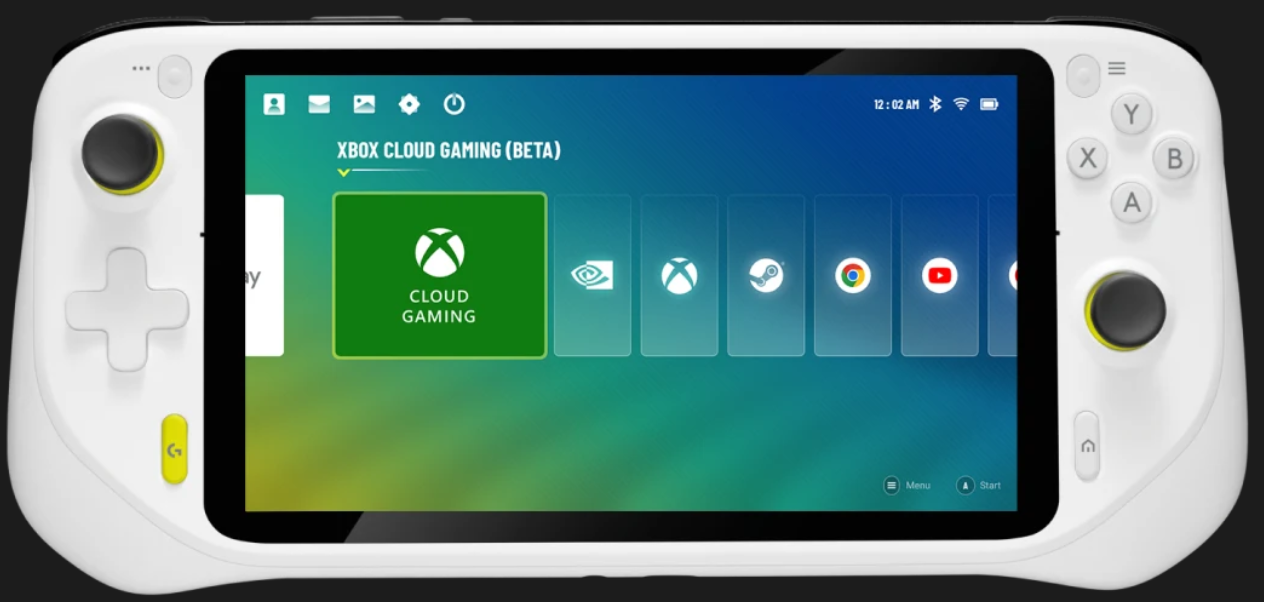
Ayn Odin Pro Reviews
The $200–$300 (depending on configuration) Ayn Odin is a new Android handheld that builds on that approach. It’s made by a company in Shenzhen without any aspirations to create a brand new gaming platform, instead entrusting you to run whatever game you want on the device from the start. But it’s powerful enough to play more types of games than any of its Android competitors, while its design and control layout give it much more flexibility.
Whether you’re into native Android gaming, retro-focussed emulation or cloud gaming, the Ayn Odin handles it all with ease, in a comfortable form factor that makes long play sessions a dream. It’s hard not to fall in love with it. If you’ve been holding out for one retro gaming device to rule them all, the Ayn Odin is it. So long as you’re willing to take the time to learn the ins and outs of emulators and game library management tools, you’ll be hard pressed to find a better portable device for retro gaming. Powerful internals and responsive analogue controls make it capable even when dealing with more advanced systems.
Thanks to the growing library of top-notch Android games and cloud-gaming services, the Ayn Odin comes into its own as a companion to your most modern gaming exploits, too. Whether streaming from a local PC or taking advantage of cloud apps like Xbox Game Pass, the Ayn Odin (with a bit of work) essentially has access to almost every game, ever, in a form factor that makes accessing the new wave of game streaming apps comfortable and accessible. It’s a confident and impressive first effort for Ayn hardware.

Nintendo Switch Lite Reviews
The Nintendo Switch Lite is a compact alternative to the standard Nintendo Switch, making it a perfect travel companion for any gamer on the go. Despite its more compact size, it still packs some incredibly impressive capabilities and doesn’t stray from its standard counterpart in terms of performance, so it’s a worthwhile addition to your setup if you’re looking for something slightly smaller.
For example, the Nintendo Switch Lite is significantly lighter and slightly smaller than the standard console, making it a convenient portable companion. However, if you prefer the flexibility of playing the Nintendo Switch or Nintendo Switch OLED handheld or docked, then the Nintendo Switch Lite might be one to miss as it doesn't include, nor work with, Nintendo Switch docks.
But if you’re a gamer on the go, then there are a lot of perks with the Nintendo Switch Lite. It has the potential to offer a fantastic alternative to the standard console due to its lighter weight and smaller size. It has access to what’s already one of the best game libraries of all time, complete with essentials like Animal Crossing: New Horizons, The Legend of Zelda: Breath of the Wild and Super Smash Bros. Ultimate as well as tons of third-party ports, indie games and retro titles.
But the Nintendo Switch Lite makes a small selection of existing games defunct due to the lack of detachable controllers. Titles such as Super Mario Party, Nintendo Switch Sports and 1-2 Switch simply aren’t supported in handheld mode, requiring individual Joy-Cons to function. If you are happy to go without motion control titles and some multiplayer games, the Switch Lite has a massive games library that is well worth delving into, it will just depend on which games you want to play more.

Retroid Pocket 3+ Reviews
The Retroid Pocket 3 is a Nintendo Switch Lite look-alike. But it comes packed with Android! The Retroid Pocket 3+ is an Android device with far less power than the Steam Deck or portable Windows PCs, so the only way it can play modern games is via cloud streaming. But if you primarily want a handheld to emulate older games wherever, this is a generally comfortable and, at $149. That makes the Retroid Pocket 3 the most affordable cloud gaming handheld on this list.
The Pocket 3+ with a stronger chipset (the Unisoc T618) and more RAM (4GB). The design is like a smaller Nintendo Switch Lite, which is to say it’s slim, lightweight (235g) and sufficiently ergonomic, so it's not fatiguing to hold for long sessions. The 4.7-inch touch display isn’t huge, but it’s bright and saturated, with a sharp-enough 750 x 1,334 resolution and a 16:9 aspect ratio that plays nice for cloud streaming and emulating systems like the PSP.
The Pocket 3+ can emulate consoles up to the Dreamcast/PSP range fairly comfortably, so you’ll have few troubles if you’re mainly looking to play older games from the SNES, PS1 and earlier. After firmware updates, the device’s performance has also improved with more demanding machines like the PlayStation 2 and GameCube. It’s still not flawless (particularly with the PS2), but numerous games are at least playable, which is impressive at this price. You can also play most native Android games and stream games from a PC, Xbox or PS5. Battery life will depend on what you’re playing but typically lasts between five and seven hours. By default, the Pocket 3+ has a smooth plastic shell, but Retroid sells a metal version of the device for $30 more. That variant also comes with Hall effect joysticks, which can be more durable over time.
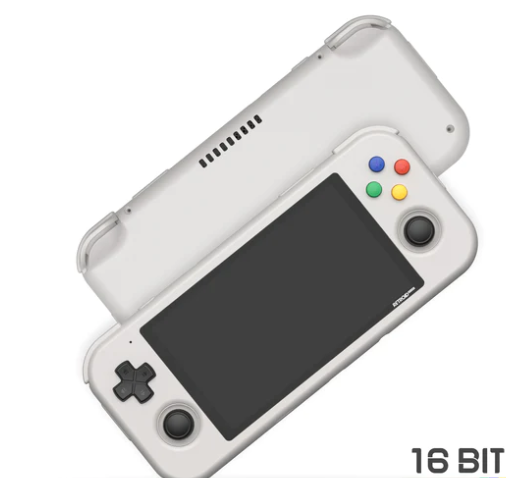
Where to Buy Handheld Gaming Consoles?
You can buy handheld gaming consoles at brands' official website (like Logitech G). You can also go Best Buy, GameStop, Walmart.com, or Amazon.com to purchase handheld gaming consoles.
Saving Tip: If you like online shopping, don't forget to sign up at Extrabux!(What is Extrabux) , then you can enjoy up to 30+% cashback on your purchase from Extrabux! Sign-Up Bonus: Free to join it & get $20 welcome bonus! Student Benefits:As long as you are a student at school, you can get a free whole year long VIP Card worth $199.
Extrabux.com cooperates with many merchants, such as: Logitech G (5% cashback), Best Buy (0.5% cashback), GameStop (Up to 7% cashback), Walmart (Up to 4% cashback), Sephora(4% -5% cash back), Moosejaw (5% -6% cash back), LOOKFANTASTIC (Up to 10% cash back), Giorgio Armani Beauty(10-12% cashback) )Sam's Club (Up to 15% cashback), Norton(Up to 20% cashback), Microsoft (Up to 7% cash back) and so on. You can save on buying daily necessities, fashion, beauty, electronic products, broadband installation, mobile communication, air tickets, hotels and other aspects of life!
Logitech G Cloud vs. Ayn Odin Pro vs. Nintendo Switch Lite vs. Retroid Pocket 3+
What's the differences between these four handheld gaming consoles? Read on to find out!
1. Specs
| Logitech G Cloud | Ayn Odin Pro | Nintendo Switch Lite | Retroid Pocket 3+ | |
| Price | $299.99 | $258/$295 | $199.99 | $149 |
| OS | Android | Android | Nintendo Switch/Horizon | Android |
| Size (L×W×H mm) | 256.84 × 117.21 × 32.95 | 224 × 95 × 15 | 3.6 in × 8.2 in × 0.55 in | 7.27 x 3.2 x 0.95 inches |
| Weight | 0.61 pounds | 240g | ||
| Chip | Qualcomm Snapdragon 720G (SD720G) Octa-core CPU up to 2.3GHz | Qualcomm Snapdragon SD845 | Quad-core Kyo Gold at 2.8GHz, quad-core Kyro Silver at 1.8GHz | Nintendo Switch Lite console[HDH-001] | 2*A75@2.0GHz + 6*A55@2.0GHz |
| RAM | 4GB | 4GB/8GB LPDDR4 | 4GB | 4GB |
| Storage | 64 GB | 128GB/256GB | 32GB of flash storage, expandable through MicroSD | 128GB eMMC 5.1 |
| Resolution | 1920 x 1080 FHD (16:9 ratio) | Up to 1080p at 1080×1920 | 1280×720 resolution | 750x1334@60fps |
| Display Type | IPS LCD | IPS LCD | LCD | IPS |
Brightness | 450 nits | 750 nits | 380 nits | 450nits |
Display Size | 7" (diagonal) | 5.98-inch | 5.5 inches | 4.7 inch |
| Refresh Rate | 60 Hz | -- | 60 Hz | 60 Hz |
| Battery | 23.1 Watt-h | 6000mA | 3570 mAh | 4500mAh |
| Battery Life | 12+ hours | 6h of play on systems like the PS2/GameCube | Approx. 3.0 - 7.0 hours | Around 6 hours playing Mega Drive |
| Under normal playing conditions, battery life may vary based on user and computing conditions. | ||||
2. Price & Availability
The Logitech G Cloud initially launched in the US in October 2022 and is now available in Logitech’s official website for $299.99.
| 128GB | $287 |
| 256GB | $328 |
Nintendo Switch Lite launched over two years on from the original Switch model. Arriving on September 20, 2019. The Switch Lite is $199.99 and available in gray, turquoise, coral, and yellow. A special edition for Pokémon Sword and Shield was available shortly after launch, but it sold out a while ago. The Nintendo Switch Lite is the cheapest Switch console you can get right now.
Retroid Pocket 3+ for $149. Now is available on Goretroid.com. There are also add-ons avaliable for you.
3. Software
The Logitech G Cloud ships with Android 11 for its OS. While you can use the G Cloud in “Tablet Mode” to enable a full Android 11 tablet experience, it’s recommended to play in “Handheld Mode” that overlays a dedicated launcher akin to the Nintendo Switch home screen, including a series of tiles cascading horizontally in order of most recent use to give it more of a console feel.
Booting it up for the first time required configuring the device with my Google account before being offered the option of booting into the aforementioned Handheld or Tablet Modes. It comes preloaded with the Xbox Cloud Streaming (beta) and Nvidia GeForce Now apps, as well as the standard Xbox and Steam Link apps for streaming locally. In addition to the four gaming options, you’ll also find the standard preinstalled suite of Google apps such as Chrome, Calendar, Contacts, Maps, etc., all of which unfortunately cannot be removed from the device.
With the Google Play Store available, you can download just about any other app you might possibly want, such as Netflix, Disney+, or the near-endless stream of Android shovelware games. However, despite being marketed as a cloud streaming device, apps such as PlayStation Remote Play and Amazon Luna didn’t recognize the built-in controller, and only offered the option to use touchscreen controls or pair a separate Bluetooth controller for gaming. It’s hard to say if any additional cloud or local game streaming apps will be supported in the future, but currently you’re stuck with the four mentioned above.
The Odin’s software is essentially stock Android 10 — the Lite model has Android 11 — with Google services included, as well as an optional launcher. This launcher useful for system-level features like adjusting fan speed and the LED lights, but it requires you to add all your games manually in order to launch them. Google’s OS isn’t perfectly optimized for 6-inch landscape displays, but at least it’s familiar and works the way you’d expect.
While Netflix doesn’t show up in the Play Store, other streaming apps like Prime Video do, though you might have to turn the Odin on its side to use the phone-style UI before your video starts. If you’re really adventurous, you can install the Arm-based version of Windows on the Odin through an open-source project specifically for the Snapdragon 845.
The Nintendo Switch system software (also known by its codename Horizon) is an updatable firmware and operating system used by the Nintendo Switch video game console.
In most situations, the Nintendo Switch will automatically download the most recent system update while it is connected online. You can verify your current menu version and manually start the update from the System Settings menu if necessary.
The Retroid Pocket 3+ also makes a great Android gaming device. As it has Google Play pre-installed, you can easily find games to play on the device, using the touch screen or (preferably) the controllers.
You can either use the Android frontend and play all of your favourite Android games or switch over to the Pocket 3 frontend and play for hours on those old systems. The Pocket 3 is a very versatile and capable handheld in both areas. Just remember you will need an SD card with your ROMs and BIOS on it to get the retro stuff to work. The Pocket 3 also has a touchscreen that works really well, which is ideal for when setting the system up, as well as when playing DS games and some Android stuff.
4. Controls
The Logitech G Cloud utilizes a 1080p 7-inch IPS 60 Hz multi-touch screen as its panel of touch and is bolstered by console quality controls and an ergonomic grip on either side. The stick and face button layout should be familiar to those who use the best Xbox controllers with its XYAB format and asymmetrical placement. The D-pad here is solid but isn’t quite as good as what you’ll find on the Xbox Wireless Controller; it’s satisfying enough but doesn’t have the same tactile click with its quiet feedback. As well as the more standard approach, there are buttons acting as start and options, as well as dedicated home and hub ones.
A / B / X / Y buttons
D-Pad
L & R analog joysticks
L & R bumpers
L & R analog triggers
L & R option buttons
G button and Home buttons
Volume control buttons
Power switch
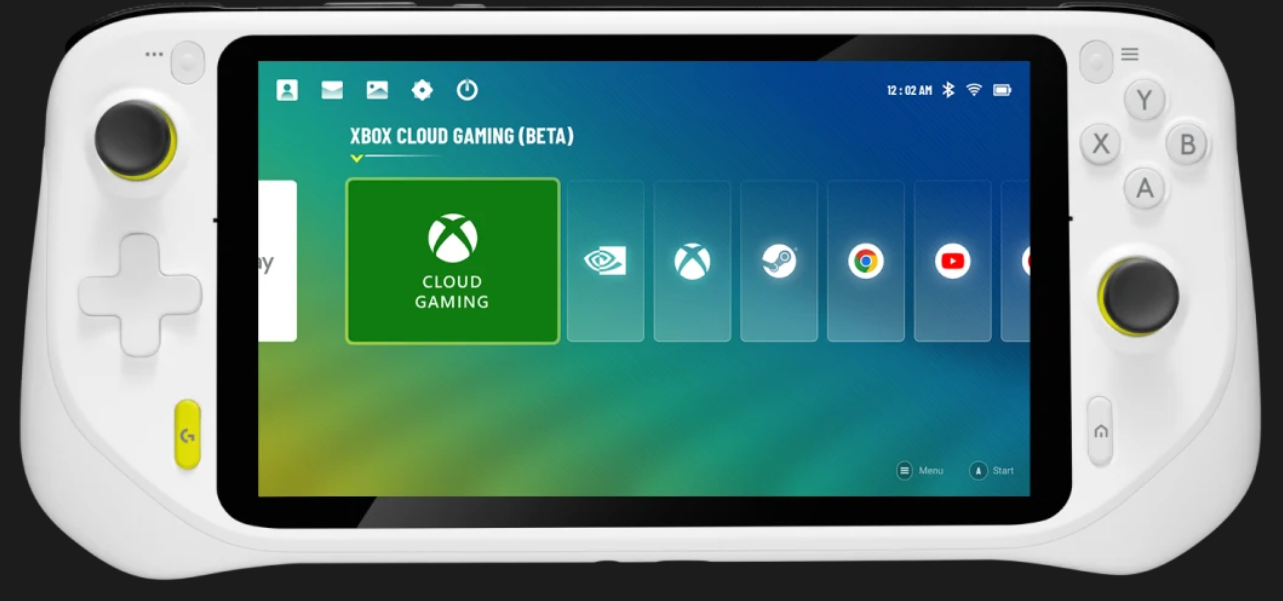
Get a feel and performance that rivals the best controllers. Customize the touchscreen, stereo audio, controller haptics, gyroscope, and remappable controls to your preferences.
The Odin has grips similar to a controller instead of flat like the Switch’s; its joysticks are shorter, too. These not only combine for a more comfortable grip on the palm, but also allow me to hold my thumbs at a lower angle — meaning there’s much less discomfort overall. Unlike other retro handhelds, it’s got a nice weight to it and smooth edges that give it a premium feel.
The Switch Lite’s buttons feel a bit different than those of its bigger brother, and mostly in a good way. The A, B, X and Y face buttons are less snappy but offer a softer, satisfyingly longer travel, while the ZL and ZR triggers feel like they have just a bit more give to them. The ZL and ZR triggers feel perfect and help cement that snug fit. However, the L and R buttons are thinner than on the original Switch. Arguably a bit too thin, as we sometimes found our fingers slipping off them.
The Lite has the same gyroscope as its bigger brother, which allowed me to move the system around to steer in Mario Kart 8 Deluxe and aim in Splatoon 2 with precision. Of course, the biggest change to the Switch Lite’s inputs is the +Control Pad directional pad, which trades in the separate directional buttons on the left Joy-Con for the kind of proper d-pad you’d expect on a portable console.
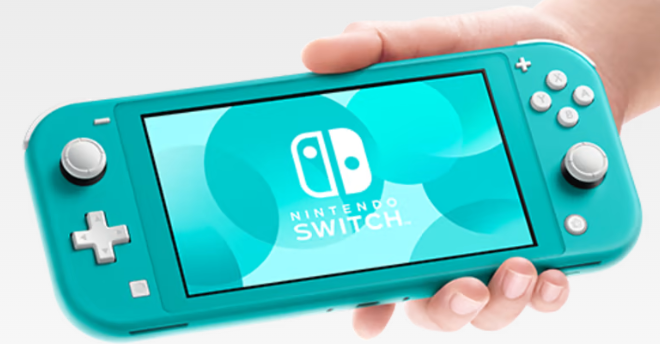
The Retroid Pocket 3 could easily be mistaken for a Switch Lite. It shares the Nintendo handheld’s general contours and design, with rounded corners, parallel dual-analog sticks, dual triggers, and even A/B/X/Y face buttons in the Nintendo configuration (A on the right). It’s smaller, though, measuring 7.2 inches wide to the Switch Lite’s 8.2 inches, and with a 4.7-inch screen compared with the Switch Lite’s 5.5-inch screen. It also lacks any home/power/plus/minus buttons on the face. Instead, power, select, and start buttons sit on the upper edge, a home button is on the right edge, and a volume rocker is on the left edge. The overall button placement isn't a problem, but the start and select buttons feel out of the way when you’re playing games that require you to regularly access menus by pressing them.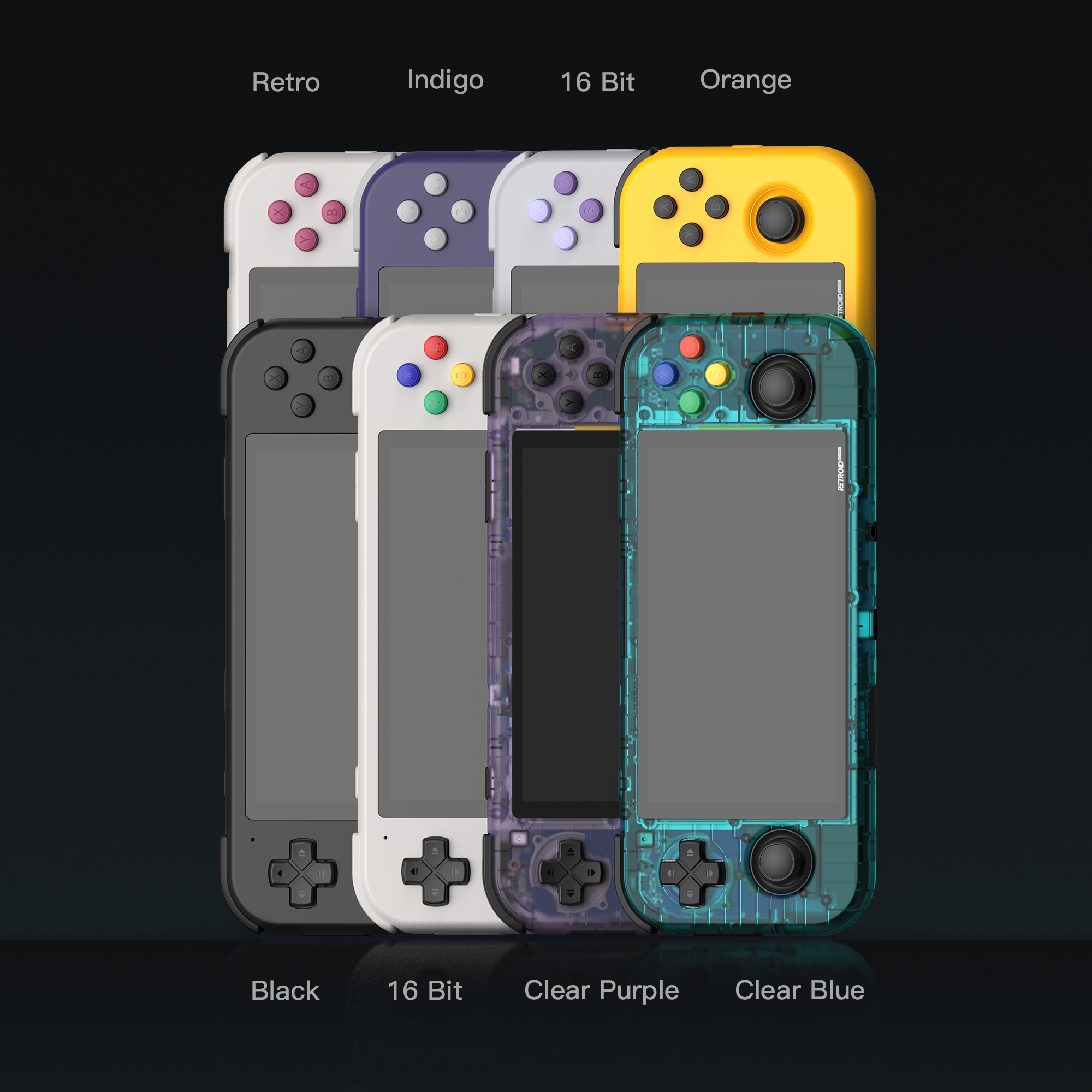
5. Game Library
Equipped with an AMD Ryzen Z1 extreme processor, a smooth 7-inch 1080p 120Hz touchscreen with AMD FreeSync technology, and ROG intelligent cooling, the ROG Ally takes handheld gaming on to a whole different level.You can access any game that runs on Windows across all game platforms, including Steam, GOG, Xbox Game Pass, cloud gaming services, Android apps and more. Play anywhere, anytime, using handheld mode or by connecting the Ally to a TV and linking multiple controllers to play with friends. The Ally even transforms into a gaming PC by connecting to ROG XG mobile eGPU and dock - supporting mouse, keyboard, monitor, and more of your favorite peripherals.
It’s a giant open world game, available cross-platform on PC, PS4 and PS5. In the handheld space, it’s usually the reserve of players with high-end iPhones or Android phones. The Odin admittedly has to dial its graphics options down a little, but you’re then left with a smooth near-60fps experience and, with the keymapper activated, access to physical controls that are not usually accessible on that platform’s version of the game. It’s the Snapdragon 845 pushed to its limits, but the marriage of hardware controls here still makes it the best way to play Genshin Impact on Android on the go.
What’s been arguably even more revelatory is how much fun we’ve had with streaming apps. With a bold screen, solid Wi-Fi and built in controls, the Odin could single-handedly make a case for a dedicated Xbox Game Pass or GeForce Now device.
Large chunks of the Halo campaign have been completed on the Odin Pro. Online Forza racing challenges have been steamrollered. Successful runs in Hades have been made (well, relatively successful at least). The same goes for local network streaming from Steam Link, Moonlight or Nvidia GameStream, with the exception of games that require a keyboard or mouse. But even then, the Odin Pro’s Android base means you could always plug in a dongle and hook up an actual keyboard and mouse. Try doing that with a Switch. The point is, on the right sort of device, with a decent internet connection, cloud gaming can feel close to indistinguishable from a title built natively to run on that hardware. The Odin is that ‘right sort’ of device.
The Nintendo Switch Lite has the same graphical capabilities as the standard Switch, and can play all of the same games that work with the Switch in handheld mode. The following games are unsuitable for the Switch Lite: 1-2 Switch, Super Mario Party, and Nintendo Labo accessory kits.
Despite missing these two features, the Switch Lite still has an accelerometer, gyroscope, and brightness sensor. That means you can still use gyro controls in games like Breath of the Wild – tilting the console to aim the bow, for instance – and the screen's brightness adjusts depending on your surroundings.
Wireless online play still means you can play with friends (not necessarily couch co-op), as we could easily play Mario Kart 8 Deluxe online.
Game Boy, Game Boy Advance, NES, Nintendo 64, Super NES, Sony PlayStation, and Turbografx-16 games all run smoothly and with nicely sharp, upscaled graphics. Even most PlayStation Portable games play well, though the most advanced games, such as God of War: Chains of Olympus and Kingdom Hearts: Birth by Sleep, stutter a bit. The screen is fantastic, too, making each game pop with vibrant colors.
Owning a Retroid Pocket 3+ opens the door to a world of portable gaming thanks to emulation of the following platforms: Nintendo NES/Famicom, Nintendo SNES/Super Famicom, Nintendo Game Boy/Game Boy Color, Nintendo Game Boy Advance, Nintendo VirtualBoy, Nintendo DS/3DS, Nintendo 64, Nintendo GameCube, Nintendo Wii, Sega Master System, Sega SG-1000, Sega Genesis/Mega Drive (including CD and 32x), Sega Game Gear, Sega Saturn, Sega Dreamcast, PC Engine, Neo Geo, Neo Geo Pocket/Color, Wonderswan/Wonderswan Color, Atari 2600, Atari 7800, Atari Lynx, MSX, Sony PlayStation, Sony PlayStation 2, Sony PlayStation Portable (PSP), 3DO, Arcade titles via MAME, CPS (1, 2, and 3) and Final Burn Alpha.
6. Battery Life
As far as gaming goes, there’s a huge case to be made for the cloud. To bolster that a bit, Logitech is going all in with the new G Cloud gaming handheld, which gets a whopping 12 hours of battery life and lets you play games from major cloud services.
As with any handheld gaming device, battery life depends on what you’re doing with it, but the Odin’s to be generally very good. The Pro version has a 6,000mAh battery, which is bigger than any phone that doesn’t make a giant battery its main selling point, while the regular Odin and Odin Lite’s are a still-pretty-big 5,000mAh. The Odin and Odin Pro support Qualcomm’s Quick Charge up to 4.0+, while Ayn claims the Lite has unspecified “fast charging.”
The wide range of battery life for the Switch depends on both system features like screen brightness and wireless capability, and the processing power demanded by games; Nintendo uses The Legend of Zelda: Breath of the Wild as a baseline, running three hours on an original Switch, four hours on a Switch Lite, and 5.5 hours on a new Switch.
The 4500mAh battery takes a few hours to charge, probably 2-3 for a full 0-100% recharge. Once powered up, you can expect to get at least 4 hours out of it, potentially up to 8 hours.
7. Pros & Cons
Pros | Cons |
|
|
Pros | Cons |
|
|
Pros | Cons |
|
|
| Pros | Cons |
|
|
Verdict: Which One Wins The Handheld Gaming Console Showdown?
It's going to really depend on what you're wanting to use it for. Here are some suggestions for you:
Switch has some great games. You can play several exclusive games like Bayonetta 2 and 3 and games by Atlus. The downside is that multiplatform games are at their worst on the Switch with many being borderline unplayable. And many people are concerned about the drift of Nintendo Switch Lite. However, You can spend more money and buy a Nintendo Switch OLED. The OLED one is the only handheld from all those you mentioned with an OLED screen and it has the best colours as a result. Finally you can connect your Switch to your TV if you ever want the big screen experience. The resolution isn't great but modern TVs have good image upscalers built in.
RP3+ has the best value, offering more for less money. RP3+ is best for PSP and N64, good price to performance ratio. Can do suprisingly decent PS2 if you are willing to mess around with the settings a little bit.
Odin Pro is the best performance, so really more suitable if you want to try stuff like Windows on Arm and Switch emulation. It will do the best PS2 and NGC; can do okay 3DS (the Pokemon games will run well). Has solid performance for the price, SD845 is kinda dated now but it's still good for now.
G Cloud is the best-supported one, so a good choice if you want something that is more sturdy and with a usable warranty. Logitech G Cloud is best for streaming, has very good battery life and is comfortable to hold. Bit overpriced for the hardware (it'll do PS2 a little better than the RP3+, if that's a concern), but it's good if you get one on sale, or lightly used for $200-250.

Extrabux is an international cashback shopping site, offering up to 30% cashback from 10,000+ Stores!
Microsoft, Dell, HP, Lenovo, Alienware, Acer, Asus, Samsung, BestBuy, Walmart, Staples, Overstock, QVC, New Egg, Office Depot, eBay, etc.
Join to get $20 welcome bonus now! (How does Welcome Bonus work?)
Recommendation
-
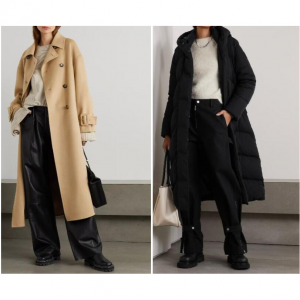
10 Best & Stylish Winter Coats for Women on NET-A-PORTER in 2024
-

Top & Best 12 Sneaker Apps/Websites for Raffles, Releases & Restocks in 2024
-

7 Best Gift Card Exchange Sites - Buy, Sell and Trade Discount Gift Card Safely and Instanly!
-

Top 9 Professional Skincare Brands for Licensed Estheticians 2024
-

13 Best Luxury Online Shopping Sites with Highest Cashback in 2024 (Coupon Code+Sale+14% Cashback)
Up to 14% Cashback!

